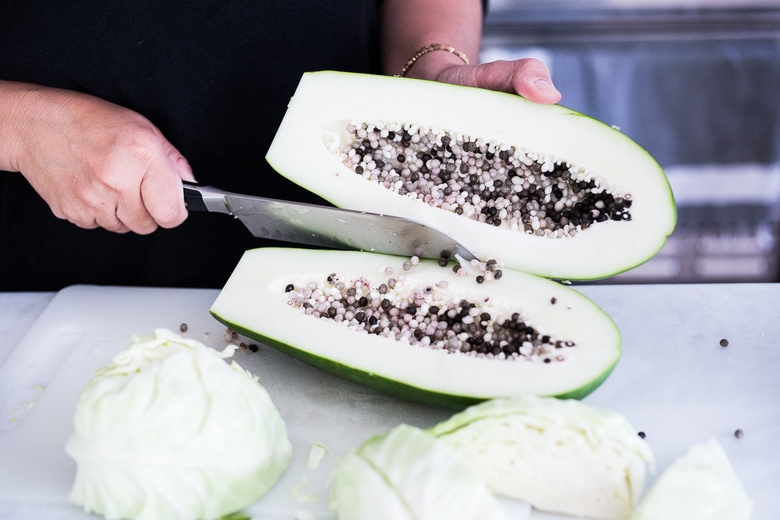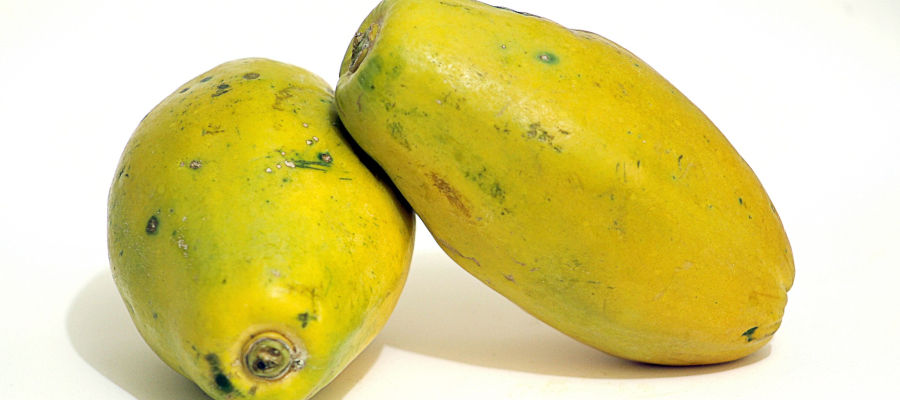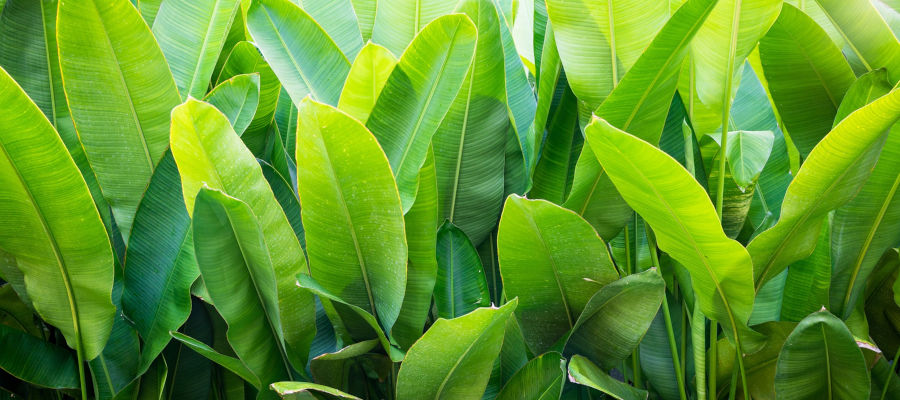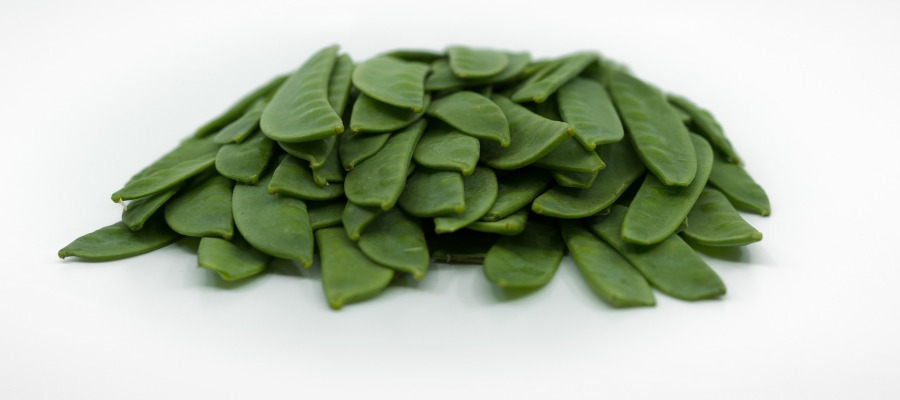There are multiple health benefits of eating green papaya, but first, we would like to tell you more about the fruit itself. A simple, unripened form of the standard papaya fruit, the green papaya is a nutrient dense, crunchy, immature fruit that is commonly enjoyed in classic Thai salads and soups. Because of its relatively flavorless flesh and crunchy shell, it is used mostly to add a crunchy texture to your foods without altering the flavor. It is also packed with nutrients that you cannot get from standard papayas. Full of enzymes such as protease, papain and chymopapain, green papaya helps to improve your digestion, supports faster metabolism and keeps skin fresh and clear.
What is green papaya?
Green Papaya is the same fruit as the orange papaya that you are used to, only picked in its unripened form. Papayas are native to the areas of Veracruz and Chiapas in southern Mexico as well as northern South America and Central America. While the papaya originated in these locations, it is now grown and harvested in many different tropical countries and is sensitive to frost, limiting its growth to only such areas. The papaya tree grows very quickly and is able to produce fruit in as little as three years.

Source: https://www.chefshandyman.ch/ - Green Papaya
What is the difference between Green Papaya and orange papaya?
Orange papaya is the version of the same fruit that is harvested once it has ripened and fully matured, while Green Papaya is picked from the tree while it is still growing. Where orange papaya has a thick, sweet, melon tasting meat inside, green papaya has a crunchy shell and crunchy white flesh inside that is relatively tasteless. It is loved for its neutral flavor because it can be used more for the purpose of adding crunch to salads and other foods without drastically altering the flavor.
Uses of Green Papaya
The papaya or tree melon (Carica papaya) is a raw edible fruit whose ripe flesh has a sweet taste. What does green papaya taste like? Unripe, green papayas, on the other hand, taste tart and can be processed like vegetables.
Use in the kitchen:
Vegetable papayas, also called melon tree fruits, are used in salads, chutneys, salsas, soups or stews. They are also excellent for refining curries. As a raw vegetable, green papayas can be prepared similar to kohlrabi or zucchini. The young papaya fruits have a green skin and a light green to white flesh. The kernels (seeds) of the unripe papaya are white and inedible. Only the black seeds of the ripe papaya are edible: they have a piquant taste, the pungency of which is reminiscent of nasturtium or pepper.
Are there any health benefits of eating Green Papaya?
There are multiple health benefits of eating green papaya. Eating the papaya fruit offers you a wealth of healthy compounds, among them being the higher amount of potassium than what is found in ripe papayas and is very important because of its electrolyte content. The high levels of papain, which are protein digestion enzymes, are also responsible for better digestion. Green papaya contains other active enzymes as well, including chymopapain, which helps to break down carbs, proteins and fats in order to promote a healthier metabolism and to help maintain a healthier weight. The protease enzyme content in green papaya may also help to keep your skin healthy and fresh.
Papaya against gastrointestinal complaints
Whether enjoyed pure or prepared as a salad, as a smoothie or freshly squeezed juice, this fruit does your line good and relieves gastrointestinal complaints such as flatulence, stomach upset and constipation. The nutritious pulp of the papaya contains papain, a protein-splitting enzyme that aids digestion. The highest papain content is found in the still unripe, green papaya, which is used for Asian papaya salads, for example.
This papain, which is also found in other parts of the papaya tree (also known as the paw paw tree) such as the leaves, sets off a chemical reaction in our digestive tract in which proteins from food are broken down into amino acids to be usable by humans. At the same time, the enzyme internally protects against inflammation, which otherwise can be the cradle of many diseases (e.g. rheumatism).
If we look at the other ingredients of the papaya, we find many other essential nutrients in addition to the digestive enzyme papain, some of which have antioxidant and thus disease-preventing effects. Especially worth mentioning are the high proportions of vitamin A, vitamin C, vitamin E and beta-carotene. In addition, papaya is a good source of magnesium, potassium and a number of B vitamins such as folic acid and pantothenic acid (B5). Not to be sneezed at are also the dietary fibres that are essential for a healthy intestine.
Papaya against stomach ulcers & intestinal parasites
Health benefits of eating green papaya can also be found here. The papain and the fibre of the papaya are not only useful in the digestive system, but some animal studies also give hope for the alternative treatment of stomach ulcers. A 2009 study published in the Journal of Medicinal Food reported the efficacy of unripe papaya against ulcers in laboratory rats. Concentrated papaya extract could therefore also be attractive as a chemical-free remedy for ulcers in humans.
As a protein-splitting enzyme, papain also fights intestinal parasites, which feed on undigested protein and strain the immune system. Papain is also effective against viruses, allergens, yeasts and fungi in the intestines. Papaya is especially good after antibiotic treatment, as it helps to restore a healthy balance of intestinal bacteria, which in turn strengthens the immune system and deprives cancer cells of their breeding ground.
Papaya inhibits growth of cancer cells
Health benefits of eating green papaya are also verified by experts. Doctors in the western world are beginning to recognize the health value of papaya, which primitive peoples seem to have been aware of for generations. More than 600 studies are concerned with the healing powers of the papaya against cancer alone. The Australian health service even officially promotes the fruit as a cancer cure plant.
Scientists at American and Japanese universities have tested the anti-cancer properties of papaya in a wide range of laboratory-bred tumors, including breast, cervical, pancreatic, liver and lung cancer. The researchers used dried papaya leaf extract for their tests. In all the tests, the growth of cancer cells slowed down within 24 hours due to exposure to papaya extract.
While Prof. Bharat B. Aggarwal of the University of Texas is once again praising the health-promoting active ingredients of the enzyme papain, other studies are considering a chemical compound from the group of mustard oils. According to an issue of the Journal of Oncology (October 2008), animal experiments confirmed the effectiveness of the so-called isothiocyanates against the above-mentioned forms of cancer as well as against colon cancer and leukaemia.

Source: https://www.feastingathome.com/ - Health benefits of green papaya
Targeted prostate cancer studies of the University of Illinois, on the other hand, concentrated on the anticarcinogenic potential of the antioxidant lycopene, which, as a representative of the carotenoids, is not only responsible for the orange-coloured flesh of the papaya, but also makes a valuable contribution to catching radicals. Epidemiological studies have attributed high bioavailability to lycopene, which makes it highly digestible for our organism. Lycopene accumulations in human tissue such as prostate cells can thus protect against cancer. Australian research has found that men who consume the highest amounts of lycopene in foods such as papaya are 83 percent less likely to develop prostate cancer.
The claim that papaya seeds can deacidify the body also seems interesting in this context. Since cancer cells feel most comfortable in an acidic environment, we should perhaps eat the black globules with the next papaya as a precaution or use them elsewhere as a fruity and peppery spice. We can be curious about corresponding studies!
Papaya against wrinkles
Health benefits of eating Green Papaya can also be found in terms of skin care. When we roam through the cosmetic lines of the drugstores and take a closer look at one or the other anti-aging article, one label always catches the eye: with valuable papaya extract! In fact, papaya has a whole squadron of natural anti-wrinkle active ingredients up its sleeve that make it a fruity fountain of youth for internal and external use.
The already much praised digestive enzyme papain also has a positive effect on the wrinkle front. Just as its antioxidant properties accelerate the healing of wounds, papain is also said to strengthen the elasticity of the skin and thus become active against wrinkles. By helping to loosen dead skin cells that would otherwise clog pores and cause acne, papain smoothes the upper layer of skin and can reduce fine lines and wrinkles.
Papaya's high vitamin C content also supports collagen production, which is the basis for firm skin. The antioxidants beta-carotene, vitamin A and E can visibly improve the complexion and at the same time strengthen the structure of hair and nails. Applied externally as a cream or mask, papaya not only provides elasticity and suppleness, it is also said to be able to fade freckles and sun spots.
Fatburner Papaya: Lose weight with the superfruit
The tree melon has an excellent reputation among those willing to lose weight. This is because it contains only 35 calories per 100 grams. With 7 g of carbohydrates, they are a low-carb fruit - perfect for those who do not want to miss out on the health benefits of fruit during their diet. For comparison: 100 grams of bananas have a proud 20 carbohydrates! The enzyme papain is also good for the slim line: it helps to digest protein and accelerate fat burning. As it consists of 90% water, the tree melon also provides us with plenty of liquid and is the perfect choice on detox days!
Kitchen tips and the correct preparation of the papaya
Papayas are imported to Germany all year round - it is not unusual for the fruit to have been transported long distances. This is why the fruits are not harvested when they are fully ripe in the growing regions. The fruits usually have to ripen a little longer so that we can enjoy them as an exotic sweet fruit. That's why it's time to open your eyes in the supermarket! But the right technology is also needed when processing tropical fruit.
How do I recognize a ripe papaya?
You can check the degree of ripeness of a papaya with a few small tests:
- The rind should be yellow.
- The papapya smells aromatic.
- The rind yields slightly with a gentle finger pressure.
How can I let a papaya ripen?
If you get an unripe papaya in the supermarket, you can simply leave it at home for a few days to allow it to ripen. However, this is only possible if the fruit has yellow spots or stripes at the time of purchase. An entirely green papaya has already been harvested unripe and will not ripen. Nevertheless, you can also use unripe papayas in the kitchen. The flesh is light green and the seeds are white. Only the flesh is used. It does not taste as sweet as the ripe fruit and can be prepared like vegetables, for example in salads, because of the firm flesh.
You can also help with the ripening process: Simply place your papaya next to fruit that emits a lot of the gaseous plant hormone ethylene. These fruits include apples, apricots and plums. This trick also works the other way around - because papayas also contain a large amount of ethylene, which makes other unripe fruits ripen faster.
Which part of the green papaya is edible?
You can eat the pulp of the unripe and ripe papaya, as well as the dark seeds of the ripe fruit - they contain the most papain. Although the rind is inedible, it can theoretically also be used in powerful smoothies mixers - the important thing is that you rinse the rind well beforehand!
Beauty tip: Otherwise the Papaya bowl is also great for a small beauty treatment: Simply place the bowls with the inner side on your face and remove them after 20 minutes and remove any residue with warm water. For a papaya mask you can puree the peels (of course you can also use the papaya pulp) with some coconut oil, apply to the face and let it work for 20 minutes, then rinse off. The mask moisturizes and makes the skin glow! If you're looking for more Health benefits of eating Green Papaya, stay tuned for coming blogs.


